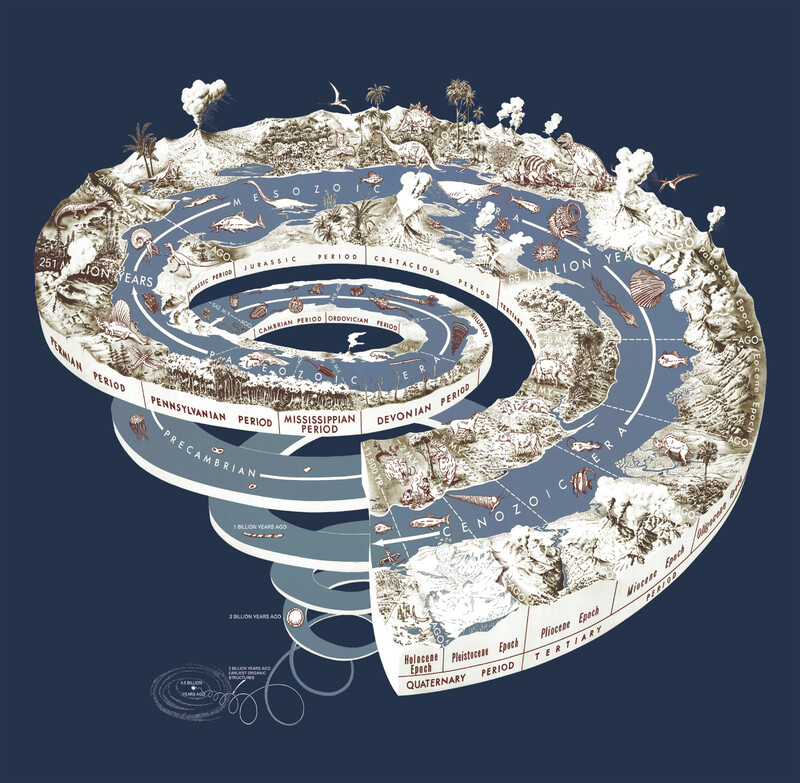- 01.0Cover
- 01.1Geologic Time SpiralLisa Hall
- 01.2How to Read this Broadsheet
- 01.3How to Graft a CityShannon Mattern
- 01.4IntersectionsMorris Lum
- 01.5Climate Change: An Unprecedentedly Old CatastropheKyle Powys Whyte
- 01.6The LEAP ManifestoLEAP
- 01.7Decolonizing the AnthropoceneHeather Davis, Zoe Todd
- 01.8This, Seeded in a GlanceJulie Joosten
- 01.9Tree Permit TP-2016-00332Kika Thorne
- 01.10Prosthetic CarapaceAmanda Boetzkes
- 01.11Pollution is ColonialismEndocrine Disruptors Action Group, Civic Laboratory for Environmental Action Research
- 01.12What is The Economy?D.T. Cochrane
- 01.13Serpentine GalleriesFraser McCallum
- 01.14Credit Valley Conservation Authority: Nature/Culture/NatureAndrea Olive
- 01.15Learning from Natural Assets
The Climate Change Project, City of Mississauga
- 01.16Local Useful Knowledge: Resources, Research, Initiatives
- 01.17Glossary
Geologic Time Spiral
- Lisa Hall

Drawing attention to the relative scales of geologic and human time, the Geologic Time Spiral is an apt starting place for an inquiry into the Anthropocene. Earth’s origin and early life are obscure, receding into a distant past some 4.5 billion years ago—but as time and the spiral unfold, more details emerge. Depicted is the story of a changing planet and evolving life, a story recovered from the rocks that form the planet’s crust. Human-time barely registers, yet our traces may define the next chapter. The spiral image also calls to mind oft-quoted lines from Yeats’s 1919 poem “The Second Coming.” The sentiment continues to resonate:
Turning and turning in the widening gyre
The falcon cannot hear the falconer;
Things fall apart; the centre cannot hold…
See Connections ⤴